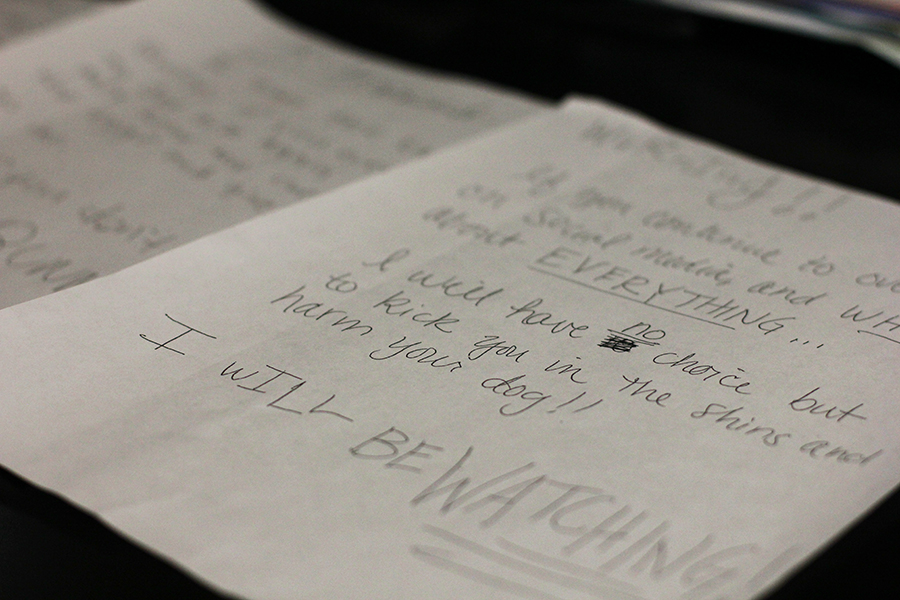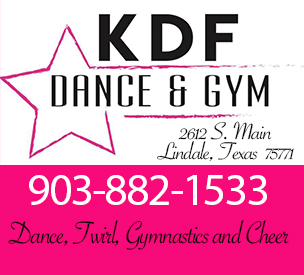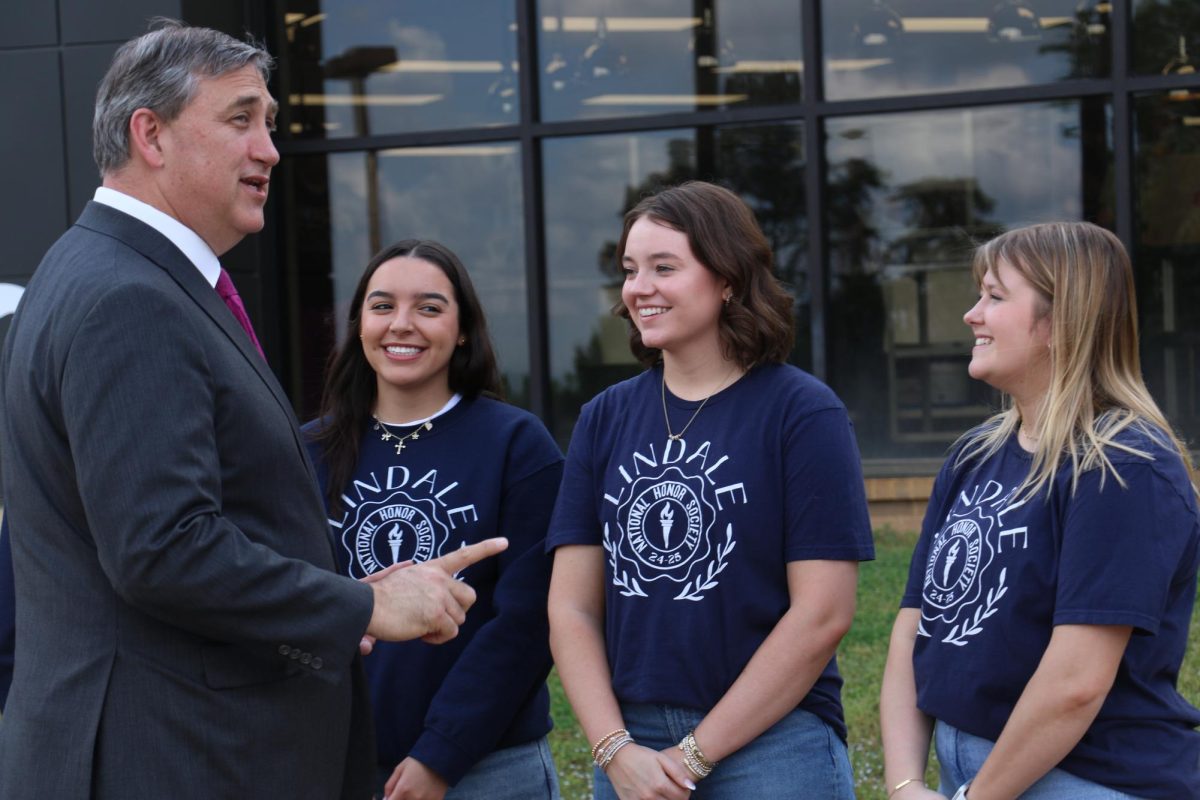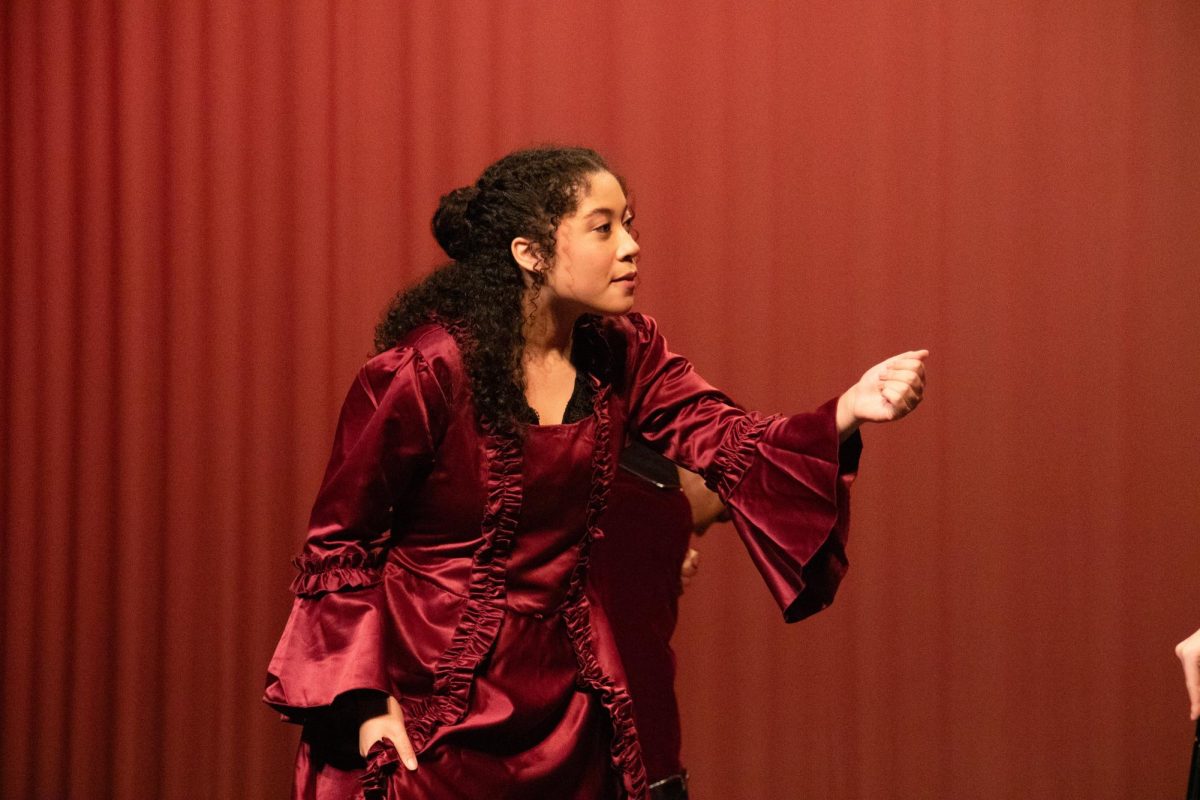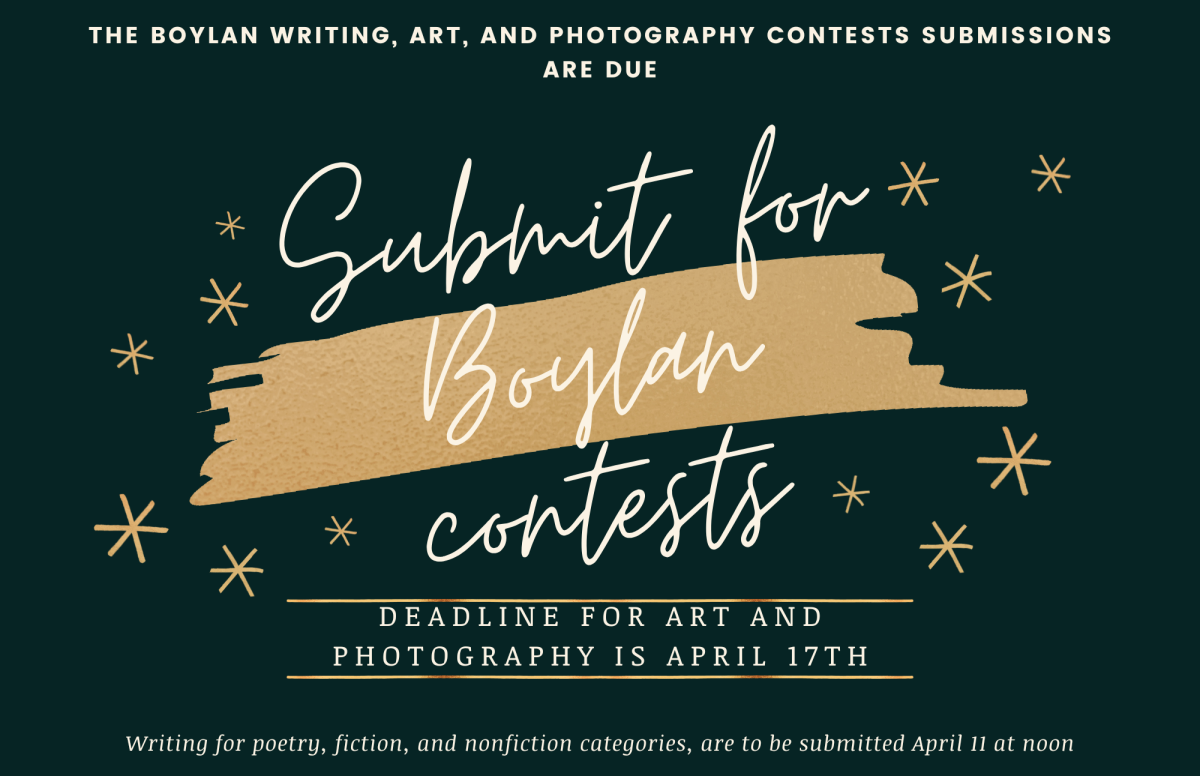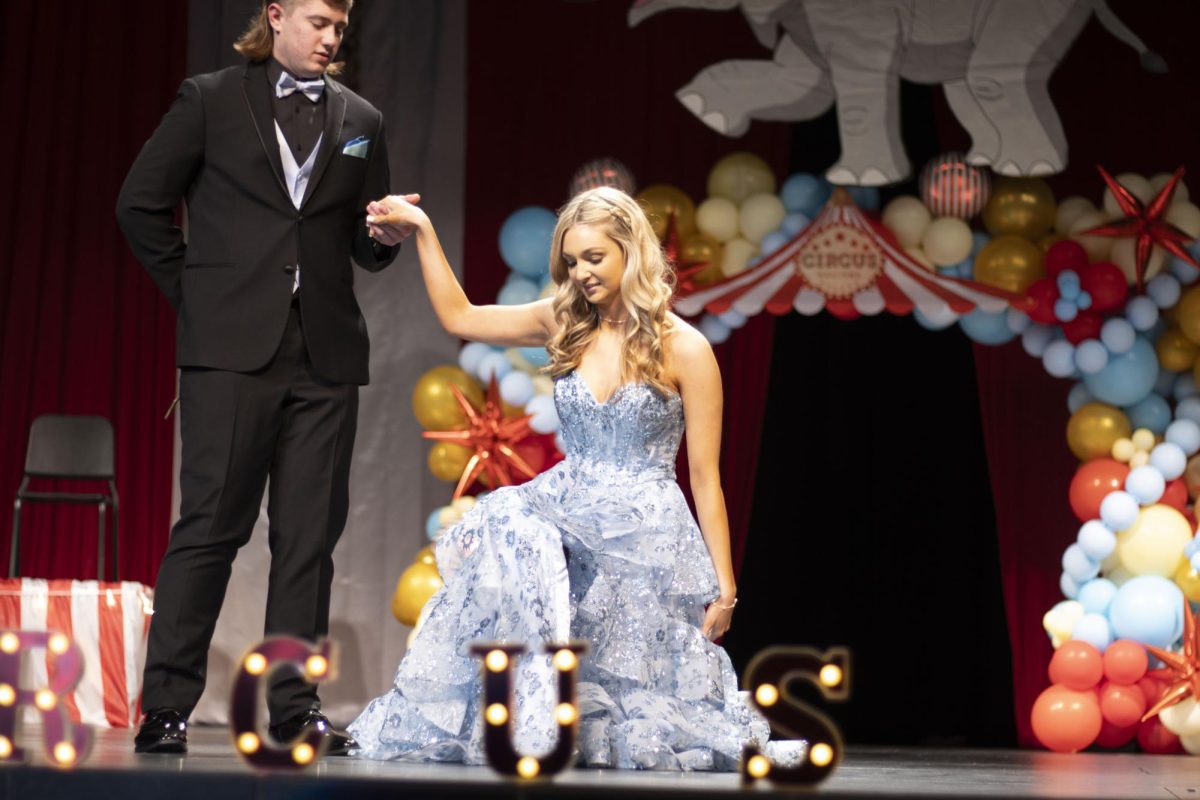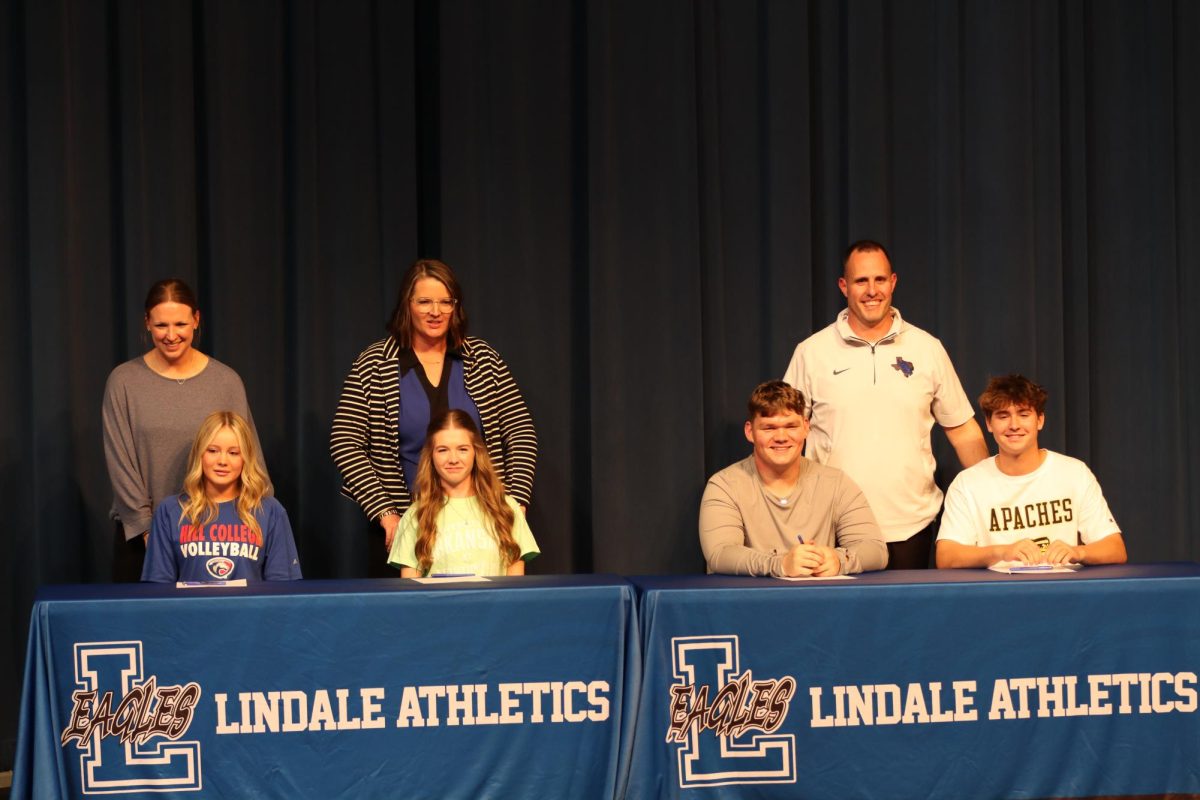Forensic science teachers conducted an experiment to teach students about handwriting analysis. During the lesson on forgery in this criminal evidence class, students learned about different handwriting characteristics and how to identify a person by their penmanship.
“We are doing our unit on document analysis which includes forgery, counterfeiting and ransom notes,” forensic science teacher Mary Lyles said. “The students are learning how to visually analyze handwriting- [looking] at a known handwriting sample of [a] suspect and compare it to the questioned document.”
In the experiment “keys” were spread out on the lab tables with a known person and identifiable words. Students then had to compare these documents to anonymous letters and try to match each note to its corresponding key.
“We sent out a request to have teachers submit a handwriting sample and a handwritten ransom note,” forensic science teacher Amanda Speaker said. “We then had our forensics students compare the different handwriting samples with the ransom notes using handwriting analysis techniques to try to match them up correctly.”
Forensic science is the use of science to collect, examine and analyze any physical evidence from a crime. In the course both Lyles and Speaker show students real-life examples and review cases in which forensic evidence has brought justice.
“We have been looking at the case of Jon Benet Ramsey and how the ransom note was used as evidence,” Lyles said. “Ransom notes have also been a huge part of other famous investigations like the kidnapping of the Lindbergh baby.”
The classes have done many experiments this year, such as crime scene reconstructions and “dioramas”, or scale models of a homicide. The teachers often invite fellow students and faculty members to view their creations.
“Anytime we can get people outside our class involved, it makes it that much better,” Lyles said. “As we continue to write curriculum for this class we want to involve other students, teachers and people in the community as much as possible in our crime scenes and projects.”
The teachers had the option to disguise their handwriting as to make it harder on the participants. Some students decided to use the contents of the ransom note to determine the author
“I got 7 out of 19 [matches] right,” senior Klaire Hicks said. “It was cool to see all the different types of handwriting. Some were very hard because the people writing the notes would purposely change or disguise their handwriting.”


